DIY Garden Landscaping and Exterior Decoration for Log Cabins
A log cabin is more than just a simple dwelling; it represents a way of life that brings you closer to nature and embraces a tranquil, simple lifestyle. To enhance the living experience in a log cabin, the design of the garden and the exterior environment is equally important. A well-designed and decorated garden not only provides a comfortable outdoor space but also boosts the overall appeal and value of the property. Through DIY projects, you can unleash your creativity and transform your garden into an ideal space that is both beautiful and functional.
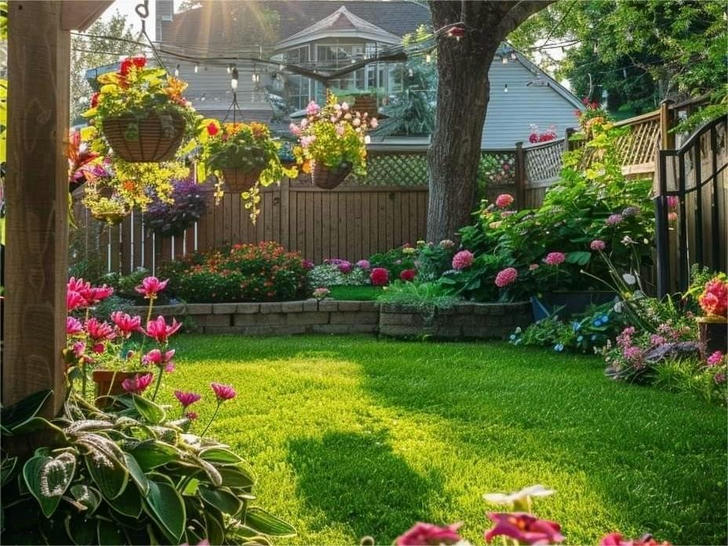
1. Designing Gardens and Green Spaces
Gardens and green spaces are not just for visual beautification; they are also key to maintaining ecological balance and improving air quality. With careful plant selection, you can create a vibrant green space around your log cabin.
Choose Suitable Local Plants Choosing plants that are native to your area is crucial. They are better adapted to the local climate and tend to thrive more healthily with lower maintenance costs. For example, hardy evergreen plants like pines and fir trees are great for cabins in colder climates, while drought-tolerant plants like succulents and cacti are perfect for gardens in arid regions. Using local plants also reduces water consumption and maintains ecological balance. Example: A log cabin owner selected local lavender and rosemary as the main plants for their garden. These plants are hardy, fragrant, and attract beneficial insects like butterflies and bees, promoting biodiversity in the garden.
Zoning and Layered Design To create a more dynamic and interesting garden, you can use zoning to add layers to the space. In the front yard, you might design a small flower bed with colorful blooms, while in the backyard, you can create a more natural green space or a small woodland area, ideal for relaxation and leisure. Different plant areas can be paired based on their growth needs. For example, shade-tolerant plants can be placed under trees, while sun-loving plants can be situated in open areas. Example: A log cabin owner designed two distinct garden zones: the front garden with vibrant chrysanthemums and roses, and the backyard with large trees and groundcover plants. The contrast between the two areas creates a rich and varied landscape, each offering a different aesthetic experience.
Proper Drainage Design
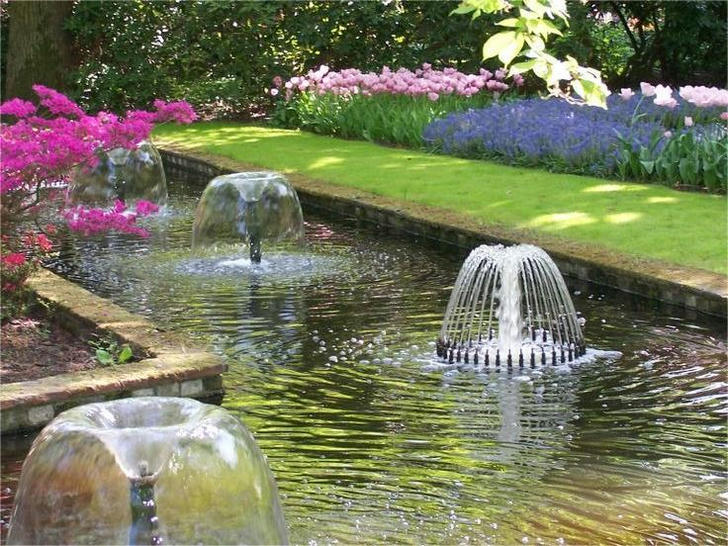
A good drainage system is crucial for the health of the garden. In wet areas, water accumulation can lead to root rot, damaging plants. Installing drainage ditches, soak-away pipes, or mixing gravel and sand into the soil can effectively prevent water buildup. Ensure that the flower beds and green spaces are slightly sloped so that rainwater can drain away quickly. Example: A log cabin owner living in a rainy area installed drainage pipes in the flower beds and laid down a layer of gravel around the garden. This setup prevents water accumulation and ensures the plants' health.
2. Creating Garden Paths
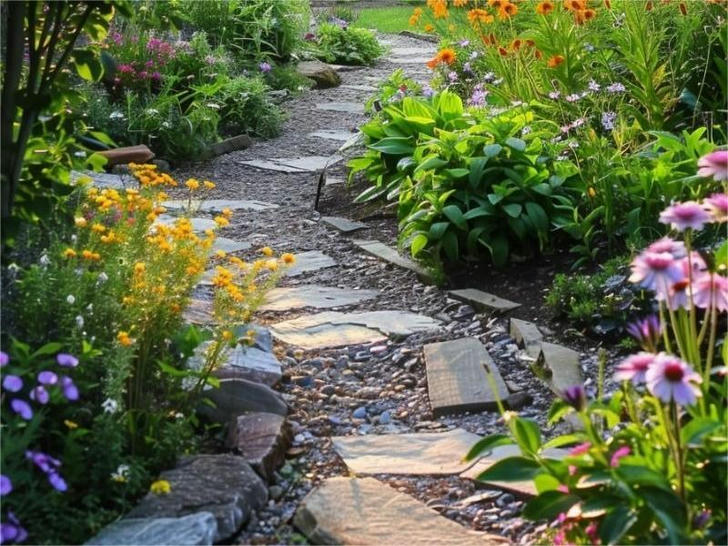
Garden paths are not just functional; they are also an important visual element in garden design. A beautifully designed path can add charm and elegance to your garden while connecting the log cabin with the garden and other outdoor areas.
Choose Suitable Materials There are many materials to choose from for creating garden paths, each offering durability and aesthetic appeal. Common options include gravel, wooden planks, bricks, and concrete pavers. Gravel paths provide a natural, rustic look, perfect for country-style log cabins, while wooden paths give a warm, cozy vibe, ideal for those who prefer a more organic feel. Brick or concrete paths are more durable and suit areas with harsh weather conditions.
Example: A log cabin owner selected gravel for their garden path, which suits the natural, rustic style of their cabin. The path extends from the front door to the garden and passes by a small water feature, becoming a beautiful focal point in the landscape.
Width and Layout of the Path When designing a garden path, consider its width and layout. The path should be wide enough to allow comfortable passage for at least two people side by side. A path that is too narrow can make the space feel cramped. The layout of the path can be designed as either a straight line or a winding route. Curved paths add more scenic variety, enhancing the garden's depth and interest.
Example: A log cabin owner created a wide brick path with two parallel lines that connect the cabin to the outdoor living area. The path was flanked by shade-loving plants and a few vintage-style street lamps, creating a charming and inviting atmosphere.
Pathway Decoration and Lighting Design
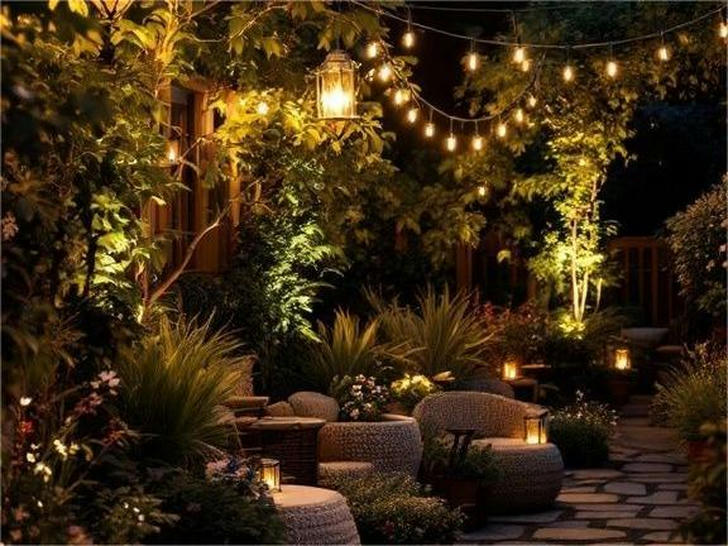
To enhance the beauty of the garden path, consider adding decorative elements like lamps, sculptures, or stone lights. Lighting not only beautifies the path but also improves safety at night. Choose lighting fixtures that complement the style of your log cabin, avoiding overly modern or mismatched designs to maintain the natural aesthetic.
Example: A log cabin owner installed wooden lantern-style lights along the garden path. The soft, warm light from the lanterns adds an inviting ambiance to the garden at night, complementing the natural beauty of the surrounding plants.
3. DIY Outdoor Furniture
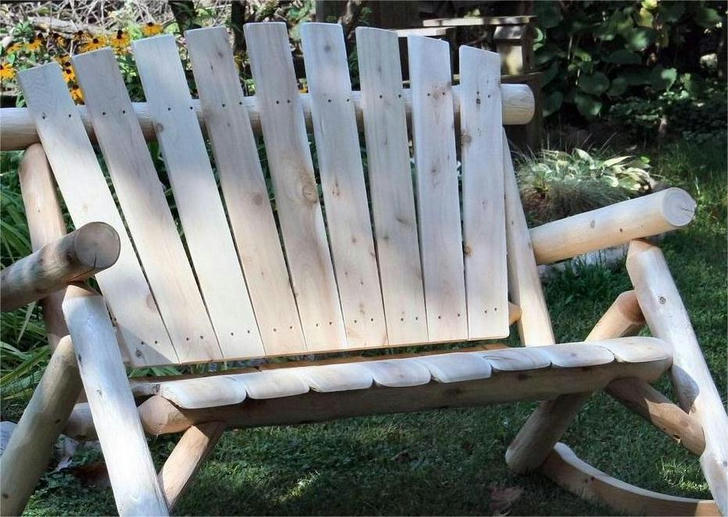
DIY outdoor furniture not only saves money but also allows you to add unique personal touches to your garden. The process of creating furniture is rewarding, offering a chance to craft functional and aesthetically pleasing pieces that enhance the overall outdoor living experience.
Choose Suitable Wood Wood is the most common material for outdoor furniture. Opt for weather-resistant wood like pine, cedar, or redwood, as these types are durable and able to withstand the outdoors. When selecting wood, ensure it is free from cracks and pests, and its surface is smooth for easier handling and finishing.
Example: A log cabin owner made a bench out of cedar wood, known for its natural aroma and resistance to decay. After sanding and finishing, the bench not only provided a comfortable seating option but also added a rustic charm to the garden.
Design Simple, Functional Furniture DIY furniture should be simple and functional, yet align with the aesthetic of your log cabin. Start with basic pieces like a wooden table and chairs, creating a relaxing outdoor dining space. Other items like benches, plant stands, or bookshelves can also be great DIY projects. These pieces serve both practical and decorative purposes, enhancing the comfort and visual appeal of your outdoor living area.
Example: A log cabin enthusiast made a wooden table and four chairs, placing them around their outdoor dining area. After sanding and painting the furniture, it not only served as a functional dining set but also brought a rustic, cozy vibe to the outdoor space.
Add Protective Coating to Furniture Since outdoor furniture is exposed to the elements, it is important to protect it from wear and tear. After completing the furniture, apply a protective finish like waterproof paint or wood sealant to extend its lifespan. Regular maintenance and reapplication of the protective coat will ensure the furniture remains beautiful and durable.
Example: A log cabin owner applied a water-resistant coating to the benches they built, ensuring the wood was protected from rain and moisture. With periodic touch-ups, the furniture maintained its appeal and functionality over the years.
Through these DIY projects, you can enhance both the appearance and functionality of your log cabin garden. Not only will these projects save you money, but they will also allow you to create a personalized outdoor space that suits your needs and lifestyle. Whether it's designing a garden, creating pathways, or building furniture, each project adds value to the overall living experience and brings you closer to nature.
